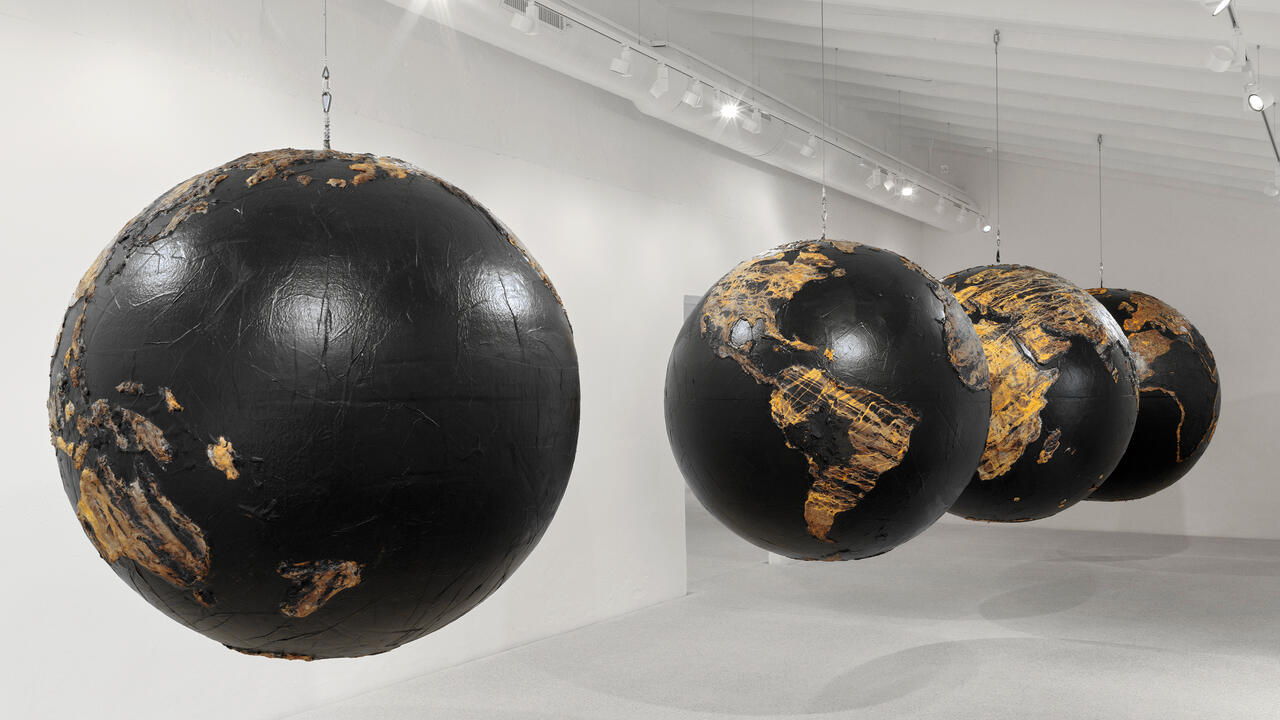Eulàlia Rovira’s Dance with the Dead
At etHALL, L’Hospitalet de Llobregat, the artist pays homage to the thresholds between life and death
At etHALL, L’Hospitalet de Llobregat, the artist pays homage to the thresholds between life and death

In the early 1840s, London’s deconsecrated Enon Chapel offered a peculiarly ghoulish merriment: dancing on the dead. Over the preceding two decades, the church’s former priest, Reverend Howse, had sold cheap burials to the penniless and stored their bodies in the building. The remains of some 12,000 people were eventually discovered in a pit beneath the floor. A reproduction of an anonymous 1847 engraving depicting a cross-section of this incongruous venue accompanies Eulàlia Rovira’s first solo exhibition at etHALL, ‘Esmorteir l’esmorteït’ (Deaden the Deadened). Printed on the verso of a text by the artist, the engraving is a visual clue to deciphering her architectural intervention and a series of photographs. The results are a syncretic decomposition of etymology and civil engineering.
A line of four wooden posts (all works, Esmorteir l’esmorteït, 2020) protrude down from the centre of the roof trusses of the gallery, a former confectionary factory built in the early 20th century in Barcelona’s conjoined city, L’Hospitalet de Llobregat. Rovira’s posts are almost identical in dimensions to the existing timber beams, yet, as in restorations that deliberately reveal what has been added, their unvarnished surfaces subtly disclose their newness. Each upright is held in place by a black ratchet strap of the kind used to secure cargo. Lashed to the highest points of the gallery’s rafters and tucked underneath the ends of each of the four new vertical timbers to form V-shaped braces, this rigging allows the posts to levitate just above the floor. These beams-turned-masts serve no structural purpose but create an imposing yet elegant punctuation of the space, despite literally having no fundaments. The work is a rigid alliance between joinery, the integrity of the building and a poetic language of columns and floors.

For Rovira, the most troubling aspect of the Enon Chapel engraving was not necessarily its depiction of blithe disrespect for the dead by the living; it was that only a thin sliced-through floor partitioned the two worlds. Three photographs, modest in size and pinned to the wall adjacent to the posts, aspire to give substance to surface – a word whose origin in Spanish and Catalan (superfície) are synonymous with the superficial. For each picture, Rovira precisely illuminated and photographed a single prefabricated paving slab edge-on against a white studio backdrop. A flattening depth of field reveals the minutiae of the slabs’ casting or pressing, their various dimples and chamfers. The cropping and rotating of the images make the paving appear horizontal, resulting in a disorientating illusion of floating thickness, as if the slabs are ethereal cantilevers from a barely discernible wall. Whether portraying a speckled grey tile in the same terrazzo as the gallery floor or the smooth concrete blocks that have all but usurped the cobbles of Barcelona’s streets, Rovira’s images pay homage to, and reinvest with depth, the hard surfaces we routinely walk over that separate the city from the underworld.

The riddle-like title of Rovira’s exhibition serves as another reminder of the haunted plasticity of words. ‘Esmorteir l’esmorteït’ lingers over a Catalan word meaning damping or cushioning – how a shoe softens our step, for example. At its root lies the Latin word for death: mort. The gesture of treading makes something less living and amortises a debt to those who lie beneath our feet. Rovira turns over the notions that verticality allies with certainty and horizontality with shallowness. With the hovering, right-angle junctures of both posts and slabs, she shows how the joints between life and death can be all but invisible.
Eulàlia Rovira, 'Esmorteir l'esmorteït' runs at etHALL, L’Hospitalet de Llobregat, until 31 October
Main image: Eulàlia Rovira, Esmorteir l’esmorteït (Deaden the Deadened), 2020, installation view, etHALL, L’Hospitalet de Llobregat. Courtesy: the artist

























